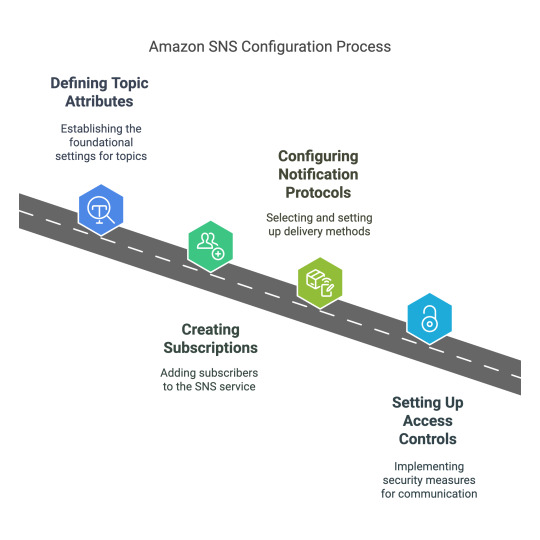#Serverless App
Explore tagged Tumblr posts
Text
Serverless-native Application Modernization in Bangalore — Antstack
Modernize your applications for the digital age. Embrace cloud-native and serverless architecture and advanced technologies for increased scalability and flexibility. We transform conventional applications into a modern architecture that leverages serverless computing. Our modernization effort doesn’t become a ‘legacy’ when we complete it!

0 notes
Text

40 notes
·
View notes
Text
Serverless Architecture: What It Is and Why It Matters?
At this blog we shares about Serverless Architecture & What It Is and Why It Matters, How Does Serverless Architecture Work, Core Concepts in Serverless Architecture. Looking to build a high-performing scable mobile or web app? Aphonic Solutions is a leading app development company in Rajkot.

#What is Serverless Architecture#Web development in India#Core Concepts in Serverless Architecture#app development company in Rajkot
0 notes
Text

How to Balance Fixing Performance Issues and Adding New Features in Web Applications?
In today’s digital landscape, web applications are essential for business operations, marketing, and consumer involvement. As organizations expand and consumer expectations rise, development teams are frequently confronted with the difficult task of balancing two key priorities: addressing performance issues and introducing new features.
While boosting performance improves the user experience and increases efficiency, new features are required to remain competitive and meet market demands. Prioritizing one over the other, on the other hand, might have negative consequences—performance concerns can lead to a poor user experience while failing to innovate can result in a competitive disadvantage.
This blog delves into how to balance improving performance and introducing new features to web apps, allowing firms to satisfy technical and market demands efficiently.
Why Balancing Performance and New Features Is Crucial
A web application‘s success depends on both its performance and its features. However, relying entirely on one might result in imbalances that impair both user happiness and business progress.
Performance:Performance is an important component that directly influences user retention and happiness. Users can become frustrated and leave if the application has slow loading times, crashes, or problems. Ensuring that your web application runs smoothly is essential since 53% of mobile consumers would quit a site that takes more than three seconds to load.
New Features:On the other hand, constantly adding new features keeps users interested and promotes your company as innovative. New features generate growth by attracting new consumers and retaining existing ones who want to experience the most recent changes.
The dilemma is deciding when to prioritize bug fixes over new feature development. A poor balance can harm both performance and innovation, resulting in a subpar user experience and stagnation.
Common Performance Issues in Web Applications
Before balancing performance and features, it’s important to understand the common performance issues that web applications face:
Slow Load Times: Slow pages lead to higher bounce rates and lost revenue.
Server Downtime: Frequent server outages impact accessibility and trust.
Poor Mobile Optimization: A significant portion of web traffic comes from mobile devices and apps that aren’t optimized for mobile fail to reach their potential.
Security Vulnerabilities: Data breaches and security flaws harm credibility and user trust.
Bugs and Glitches: Software bugs lead to poor user experiences, especially if they cause the app to crash or become unresponsive.
Strategic Approaches to Fixing Performance Issues
When performance issues develop, they must be handled immediately to guarantee that the online application functions properly. Here are techniques for improving performance without delaying new feature development:
Prioritize Critical Issues:Tackle performance issues that have the most significant impact first, such as slow loading times or security vulnerabilities. Use analytics to identify bottlenecks and determine which areas require urgent attention.
Use a Continuous Improvement Process:Continuously monitor and optimize the application’s performance. With tools like Google PageSpeed Insights, you can track performance metrics and make incremental improvements without major overhauls.
Optimize Database Queries:Slow database queries are one of the leading causes of web app performance issues. Optimize queries and ensure that the database is indexed properly for faster access and retrieval of data.
Reduce HTTP Requests:The more requests a page makes to the server, the slower it loads. Minimize requests by reducing file sizes, combining CSS and JavaScript files, and utilizing caching.
5. Leverage Caching and CDNs: Use caching strategies and Content Delivery Networks (CDNs) to deliver content quickly to users by storing files in multiple locations globally.
Why Adding New Features is Essential for Growth
In the rapidly changing digital environment, businesses must continually innovate to stay relevant. Adding new features is key to maintaining a competitive edge and enhancing user engagement. Here’s why:
User Expectations:Today’s consumers expect personalized experiences and constant innovation. Failure to add new features can lead to customer churn, as users may feel your web application no longer meets their needs.
Market Differentiation:Introducing new features allows your application to stand out in the marketplace. Unique functionalities can set your app apart from competitors, attracting new users and increasing customer loyalty.
Increased Revenue Opportunities:New features can lead to additional revenue streams. For example, adding premium features or new integrations can boost the app’s value and lead to increased sales or subscription rates.
4. Feedback-Driven Innovation: New features are often driven by user feedback. By continuously developing and adding features, you create a feedback loop that improves the overall user experience and fosters customer satisfaction.
Read More: https://8techlabs.com/how-to-balance-fixing-performance-issues-and-adding-new-features-in-web-applications-to-meet-market-demands-and-enhance-user-experience/
#8 Tech Labs#custom software development#custom software development agency#custom software development company#software development company#mobile app development software#bespoke software development company#bespoke software development#nearshore development#software development services#software development#Website performance testing tools#Speed optimization for web apps#Mobile-first web app optimization#Code minification and lazy loading#Database indexing and query optimization#Agile vs Waterfall in feature development#Feature flagging in web development#CI/CD pipelines for web applications#API performance optimization#Serverless computing for better performance#Core Web Vitals optimization techniques#First Contentful Paint (FCP) improvement#Reducing Time to First Byte (TTFB)#Impact of site speed on conversion rates#How to reduce JavaScript execution time#Web application performance optimization#Fixing performance issues in web apps#Web app performance vs new features#Website speed optimization for better UX
0 notes
Text
#Build#serverless#apps#node.js#awscloud#aws lambda#trends 2024#applications#development#application development#architecture#follow#machine learning#programming#coding#future trends#architettura
1 note
·
View note
Text
Mastering Azure Container Apps: From Configuration to Deployment
Thank you for following our Azure Container Apps series! We hope you're gaining valuable insights to scale and secure your applications. Stay tuned for more tips, and feel free to share your thoughts or questions. Together, let's unlock the Azure's Power.
#API deployment#application scaling#Azure Container Apps#Azure Container Registry#Azure networking#Azure security#background processing#Cloud Computing#containerized applications#event-driven processing#ingress management#KEDA scalers#Managed Identities#microservices#serverless platform
0 notes
Text
Technological advancements are orchestrating a monumental shift in the field of Healthcare software development. The advent of Azure and serverless technologies made an unbelievable impact on the ways of app development and deployment. Today, you can discover a variety of healthcare apps that can assess your healthcare, monitor your body's state, and provide you with helpful suggestions on how to improve it. You may access them at any time and from any location, fundamentally altering the way healthcare is seen.
The traditional approach to healthcare software development often grappled with scalability limitations and infrastructure maintenance burdens. However, with Serverless computing and the power of Azure, such challenges have been addressed. Let’s deep dive and learn how healthcare Azure software development is making a paradigm shift with serverless technology.
#Microsoft Azure development#serverless platforms#Microsoft Azure and serverless platforms#Healthcare software development#Azure development services#serverless solutions#healthcare app development company#custom healthcare software#software outsourcing#software development company
0 notes
Text
Web Development Trends for 2023: A Comprehensive Guide

Introduction
The web development landscape is constantly evolving, with new trends and technologies emerging all the time. It can be tough to keep up with all the latest changes. Still, it's important to stay informed if you want to create websites and web applications that are both modern and user-friendly.
In this blog post, we will take a look at some of the top web development trends for 2023. We'll discuss what each trend is, why it's important, and how you can implement it in your projects.
Progressive Web Apps (PWAs)
PWAs are a type of web application that uses modern web technologies to provide an app-like experience to users. PWAs can be installed on users' devices, just like native apps, and they can be used offline. PWAs also support push notifications, which allows them to send users updates and alerts even when they're not actively using the app.
PWAs are becoming increasingly popular because they offer a number of advantages over native apps:
PWAs are more accessible, as they can be used on any device with a web browser.
PWAs are easier to develop and maintain, as they are built using web technologies.
PWAs are more secure, as they are not subject to the same security vulnerabilities as native apps.
How to implement PWAs:
There are a number of ways to implement PWAs. One popular approach is to use a PWA framework, such as Next.js or Nuxt.js. These frameworks provide a number of features that make it easy to develop and deploy PWAs.
Another approach is to implement PWAs manually. This requires more technical knowledge, but it gives you more control over the look and feel of your app.
Single-Page Applications (SPAs)
SPAs are a type of web application that loads a single HTML page and then dynamically updates that page as the user interacts with it. SPAs are becoming increasingly popular because they offer a number of advantages over traditional multi-page web applications.
First, SPAs are faster, as they don't have to reload the entire page each time the user navigates to a new page. Second, SPAs are more responsive, as they can update the page in real-time as the user interacts with it. Third, SPAs can be more engaging, as they can provide a more seamless user experience.
How to implement SPAs:
There are a number of ways to implement SPAs. One popular approach is to use a JavaScript framework, such as React, Vue.js, or Svelte.js. These frameworks provide a number of features that make it easy to develop and deploy SPAs.
Another approach is to implement SPAs manually. This requires more technical knowledge, but it gives you more control over the look and feel of your app.
Serverless Architecture
Serverless architecture is a cloud computing execution model where the cloud provider dynamically manages the serverless resources. In a serverless architecture, the developer does not have to provision or manage any servers. Instead, the cloud provider automatically provisions and manages the servers based on the application's needs.
Serverless architecture is becoming increasingly popular because it offers a number of advantages over traditional server-based architectures:
Serverless architecture is more cost-effective, as you only pay for the resources that you use.
Serverless architecture is more scalable, as the cloud provider can automatically scale your application up or down based on demand.
Serverless architecture is more reliable, as the cloud provider takes care of all the server maintenance and management tasks.
How to implement serverless architecture:
There are a number of ways to implement serverless architecture. One popular approach is to use a cloud computing platform, such as AWS Lambda or Google Cloud Functions. These platforms provide a number of features that make it easy to develop and deploy serverless applications.
Another approach is to implement serverless architecture manually. This requires more technical knowledge, but it gives you more control over the look and feel of your app.
Artificial Intelligence (AI) and Machine Learning (ML)
AI and ML are two of the most transformative technologies of our time. AI is the ability of a machine to simulate human intelligence. At the same time, ML is the ability of a machine to learn from data without being explicitly programmed.
AI and ML are being used in a wide range of industries, including web development. For example, AI and ML can be used to:
Improve the performance and scalability of websites and web applications.
Personalize the user experience.
Develop new and innovative features.
Detect and prevent fraud.
How to implement AI and ML in web development:
There are a number of ways to implement AI and ML in web development. One popular approach is to use a cloud computing platform, such as AWS AI Services or Google Cloud.
Chatbots and Virtual Assistants

Chatbots and virtual assistants are computer programs that can simulate conversations with humans. Chatbots are typically used for customer service applications, while virtual assistants are typically used for productivity applications.
Chatbots and virtual assistants are becoming increasingly popular because they can provide a number of advantages over traditional customer service and productivity solutions:
Chatbots and virtual assistants can be available 24/7.
Chatbots and virtual assistants can handle multiple conversations simultaneously.
Chatbots and virtual assistants can be personalized to meet the individual needs of each user.
How to implement chatbots and virtual assistants:
There are a number of ways to implement chatbots and virtual assistants. One popular approach is to use a cloud computing platform, such as AWS Lex or Google Dialogflow. These platforms provide a number of features that make it easy to develop and deploy chatbots and virtual assistants.
Another approach is to implement chatbots and virtual assistants manually. This requires more technical knowledge, but it gives you more control over the look and feel of your chatbot or virtual assistant.
WebAssembly
WebAssembly is a binary format that allows developers to run code written in languages such as C, C++, and Rust in the web browser. WebAssembly is still under development, but it has the potential to revolutionize the web development landscape.
WebAssembly offers a number of advantages over traditional web development technologies, such as JavaScript:
WebAssembly code is faster, as it is compiled into native machine code.
WebAssembly code is more secure, as it is sandboxed from the rest of the web page.
WebAssembly code is more portable, as it can run on any device with a web browser.
How to implement WebAssembly:
There are a number of ways to implement WebAssembly. One popular approach is to use a WebAssembly framework, such as AssemblyScript or Blazor. These frameworks provide a number of features that make it easy to develop and deploy WebAssembly applications.
Another approach is to implement WebAssembly manually. This requires more technical knowledge, but it gives you more control over the look and feel of your application.
JavaScript Frameworks
JavaScript frameworks are software libraries that provide a number of features that make it easier to develop JavaScript applications. JavaScript frameworks are becoming increasingly popular because they can help developers write more efficient, scalable, and maintainable code.
Some of the most popular JavaScript frameworks include:
React
Vue.js
Svelte.js
Angular
Ember.js
How to choose a JavaScript framework:
There is no one-size-fits-all answer to the question of which JavaScript framework to choose. The best framework for you will depend on your specific needs and requirements.
Here are a few factors to consider when choosing a JavaScript framework:
Learning curve: How easy is the framework to learn?
Performance: How fast is the framework?
Scalability: How well does the framework scale?
Features: What features does the framework offer?
Community: Does the framework have a large and active community?
Responsive Design
Responsive design is a web design approach that makes websites look good and function well on all devices, from desktop computers to smartphones. Responsive design is important because more and more people are using their smartphones and tablets to access the web.
How to implement responsive design:
There are a number of ways to implement responsive design. One popular approach is to use a responsive CSS framework, such as Bootstrap or Foundation. These frameworks provide a number of features that make it easy to create responsive websites.
Another approach is to implement responsive design manually. This requires more technical knowledge, but it gives you more control over the look and feel of your website.
Cloud-Based Development and Deployment
Cloud-based development and deployment is a software development and deployment model where the software is developed and deployed on a cloud computing platform. Cloud-based development and deployment is becoming increasingly popular because it offers a number of advantages over traditional on-premises development and deployment.
First, cloud-based development and deployment are more cost-effective, as you only pay for the resources that you use. Second, cloud-based development and deployment are more scalable, as the cloud computing platform can automatically scale your application up or down based on demand. Third, cloud-based development and deployment are more reliable, as the cloud computing platform takes care of all the server maintenance and management tasks.
How to implement cloud-based development and deployment:
There are a number of ways to implement cloud-based development and deployment. One popular approach is to use a cloud computing platform, such as AWS, Azure, or Google Cloud Platform. These platforms provide a number of features that make it easy to develop and deploy
Cybersecurity

Cybersecurity is the practice of protecting systems, networks, and data from unauthorized access, use, disclosure, disruption, modification, or destruction. Cybersecurity is important because the web is a target for a wide range of cyberattacks, such as malware infections, data breaches, and phishing attacks.
How to improve the cybersecurity of your website or web application:
There are a number of ways to improve the cybersecurity of your website or web application. Here are a few tips:
Keep your software up to date.
Use strong passwords.
Implement two-factor authentication.
Use a web application firewall (WAF).
Regularly scan your website or web application for vulnerabilities.
Voice Search
Voice search is a search method that allows users to search for information using their voice. Voice search is becoming increasingly popular because it is a more convenient way to search for information, especially on mobile devices.
How to optimize your website or web application for voice search:
There are a number of ways to optimize your website or web application for voice search. Here are a few tips:
Use long-tail keywords.
Use natural language.
Optimize your website or web application for mobile devices.
Use structured data.
Ambient Design
Ambient design is a design approach that focuses on creating user interfaces that are both functional and aesthetically pleasing. Ambient design is important because it can help to create a positive user experience.
How to implement ambient design in your website or web application:
There are a number of ways to implement an ambient design in your website or web application. Here are a few tips:
Use simple and clean designs.
Use high-quality images and videos.
Use white space effectively.
Use responsive design.
WordPress Development
WordPress is a content management system (CMS) that is used to create and manage websites. WordPress is the most popular CMS in the world, powering over 40% of all websites on the internet.
How to get started with WordPress development:
If you are new to WordPress development, there are a number of resources available to help you get started. Here are a few tips:
Choose the right WordPress hosting provider.
Install WordPress on your web server.
Choose a WordPress theme and plugins.
Start creating content for your website.
Ready to take your web development to the next level?
Danip Technologies offers custom web development services that can help you create a website that is both modern and user-friendly. We have a team of experienced developers who can create a website that meets your specific needs and requirements, and we offer a variety of other services, such as SEO and digital marketing, to help you get the most out of your website.
Conclusion
These are just a few of the top web development trends for 2023. The web development industry is constantly evolving, and it can be difficult to keep up with the latest trends. However, it is important to stay informed, as new technologies and best practices can help you to create better websites and web applications.
When choosing which trends to implement, it is important to consider your specific needs and requirements. There is no one-size-fits-all answer, as the best trends for you will depend on your specific project.
#Web development trends#Progressive web apps (PWAs)#Single-page applications#Serverless architecture#Artificial intelligence#machine learning#WordPress development#Voice search#AI#web development trands 2023
0 notes
Video
youtube
Setup AWS APP Runner Service | Deploy Nodejs JavaScript API in Amazon AP... Full Video Link - https://youtu.be/7IdChQYQmm4 Hi, a new #video to setup #awsapprunner #apprunner & #run #deploy #nodejs #javascript #api in #amazon app runner #service published on #codeonedigest #youtube channel. @java @awscloud @AWSCloudIndia @YouTube @codeonedigest #awsecs #nodejs #dockerimage #aws #awsapprunner #amazonwebservices #awscloud #awstutorial #awstraining #awsapprunnertutorial #awsapprunnerdemo #awsapprunnerdocker #awsapprunnerexample #awsapprunnerreview #apprunnertutorial #apprunnervsfargate #apprunnerterraform #apprunnervselasticbeanstalk #apprunnercustomdomaincloudformation #nodejstutorial #nodejsapitutorial #nodejsapiproject #nodejsapidevelopment #nodejsawsinterviewquestions #deploynodejsapp #api
#youtube#aws#aws app runner#amazon app runner#node js api#app runner in aws#app runner serverless#app runner vs fargate#fargate vs app runner
1 note
·
View note
Text
Top 10 Web Technologies for Web Developers to Use In 2023
Summary:- The web development industry is changing and emerging at every step. Web developers are continuously experimenting and implementing various technologies to create better user experiences on websites. Therefore, they must know the right web technologies to boost the website’s functionalities. Read on this blog about the top 10 latest web technologies for web developers that will help…

View On WordPress
#AI Integration#angular#Blockchain Technology#GraphQL#Headless CMS#Node#Progressive Web Apps (PWAs)#ReactJS#Serverless Computing#Web Assembly
0 notes
Text
Amazon SNS (AWS): The Complete Guide for Developers [2025]
Amazon SNS is a fully managed publish/subscribe messaging service offered by AWS. It enables scalable and reliable communication between applications. Key features include message filtering and support for multiple protocols.
Developers utilize Amazon SNS for decoupling microservices and building event-driven architectures. Further exploration of Amazon SNS will reveal its integration capabilities and implementation patterns, providing a thorough understanding of its applications and benefits

0 notes
Text
Modernizing and growing applications can be costly and challenging for some businesses or organizations, but developing modern AWS applications helps reduce outage risk by allowing organizations to build infrastructure with multiple availability zones. Therefore, connecting with a company offering the best AWS serverless development services in USA is best.
#amazon web services Boston#serverless app development#AWS Professional Services Consultant#AWS Serverless Apps Development Services
1 note
·
View note
Text
1. **Learn the basics of web development**: To create a PWA, you need to have a basic understanding of HTML, CSS, and JavaScript. These are the foundational languages for web development.
- HTML (Hypertext Markup Language) is used to create the structure of a website.
- CSS (Cascading Style Sheets) is used to style the website, such as colors, fonts, and layout.
- JavaScript is used to add interactivity and dynamic content to a website.
There are many online resources available for learning these languages. Some popular options include [Mozilla Developer Network (MDN) ↗](https://developer.mozilla.org/en-US/docs/Web), [FreeCodeCamp ↗](https://www.freecodecamp.org/), and [W3Schools ↗](https://www.w3schools.com/).
2. **Set up a Firebase project**: Firebase is a platform offered by Google that provides various tools and services to help you build web and mobile applications. You'll need to create a new Firebase project to use Firebase Hosting, Realtime Database, Authentication, and Messaging.
- Visit the [Firebase Console ↗](https://console.firebase.google.com/) and sign in with your Google account.
- Click on "Add project" and follow the prompts to create a new project.
3. **Learn about Firebase Hosting**: Firebase Hosting is a service that allows you to host your web app on a secure and fast server provided by Google. You'll need to set up Firebase Hosting for your project.
- Follow the [official Firebase Hosting documentation ↗](https://firebase.google.com/docs/hosting) to learn how to set up Firebase Hosting for your project. This will involve installing the Firebase CLI (Command Line Interface) tool, initializing your project, and deploying your web app.
4. **Learn about Firebase Realtime Database**: The Firebase Realtime Database is a cloud-hosted NoSQL database that lets you store and sync data across different devices in real-time.
- Follow the [official Firebase Realtime Database documentation ↗](https://firebase.google.com/docs/database) to learn how to set up and use the database in your project. This will involve connecting your web app to the database, writing data, reading data, and securing your data with rules.
5. **Learn about Firebase Authentication**: Firebase Authentication provides backend services to authenticate users in your app. It supports various authentication methods, such as email/password, social media logins, and more.
- Follow the [official Firebase Authentication documentation ↗](https://firebase.google.com/docs/auth) to learn how to set up and use authentication in your project. This will involve enabling authentication providers, creating user accounts, and managing user sessions.
6. **Learn about Firebase Cloud Messaging**: Firebase Cloud Messaging (FCM) is a messaging service that allows you to send notifications and messages to users of your app.
- Follow the [official Firebase Cloud Messaging documentation ↗](https://firebase.google.com/docs/cloud-messaging) to learn how to set up and use FCM in your project. This will involve configuring FCM, sending messages, and handling messages on the client side.
7. **Build your PWA**: Now that you have a basic understanding of web development and Firebase services, you can start building your PWA. Create public and private pages using HTML, CSS, and JavaScript while leveraging Firebase services to handle real-time data, user authentication, and messaging.
Remember that learning to code takes time and practice. Don't get discouraged if you encounter challenges along the way. The community around web development is vast, and you can find many resources to help you overcome any obstacles. Good luck!
#firebase#javascript#nosql#realtime database#chicago#app developers#database#google cloud#lemonbarski#personal website#webdevelopment#front end developers#backend#serverless#ai#ai generated#Poe ai
0 notes
Text
Tech Skill For Computer Science Students
Technical Skills for Computer Science Students
Software Development
MERN Stack
Python-Django Stack
Ruby on Rails ( RoR )
LAMP ( Linux, Apache Server, MySql, PHP )
.Net Stack
Flutter Stack ( For mobile app )
React Native Stack ( Cross Platform mobile app development )
Java Enterprise Edition
Serverless stack - "Cloud computing service"
Blockchain Developer
Cyber Security
DevOps
MLOps
AL Engineer
Data Science
9 notes
·
View notes
Text
Skyrocket Your Efficiency: Dive into Azure Cloud-Native solutions
Join our blog series on Azure Container Apps and unlock unstoppable innovation! Discover foundational concepts, advanced deployment strategies, microservices, serverless computing, best practices, and real-world examples. Transform your operations!!
#Azure App Service#Azure cloud#Azure Container Apps#Azure Functions#CI/CD#cloud infrastructure#cloud-native applications#containerization#deployment strategies#DevOps#Kubernetes#microservices architecture#serverless computing
0 notes